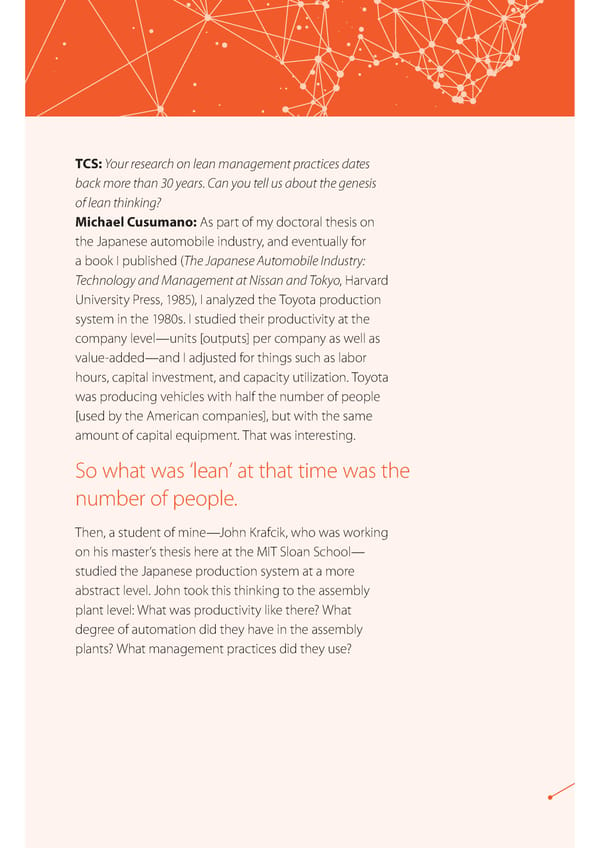TCS: Your research on lean management practices dates back more than 30 years. Can you tell us about the genesis of lean thinking? Michael Cusumano: As part of my doctoral thesis on the Japanese automobile industry, and eventually for a book I published (The Japanese Automobile Industry: Technology and Management at Nissan and Tokyo, Harvard University Press, 1985), I analyzed the Toyota production system in the 1980s. I studied their productivity at the company level—units [outputs] per company as well as value-added—and I adjusted for things such as labor hours, capital investment, and capacity utilization. Toyota was producing vehicles with half the number of people [used by the American companies], but with the same amount of capital equipment. That was interesting. So what was ‘lean’ at that time was the number of people. Then, a student of mine—John Krafcik, who was working on his master’s thesis here at the MIT Sloan School— studied the Japanese production system at a more abstract level. John took this thinking to the assembly plant level: What was productivity like there? What degree of automation did they have in the assembly plants? What management practices did they use?
 The Essence of Agile Page 21 Page 23
The Essence of Agile Page 21 Page 23